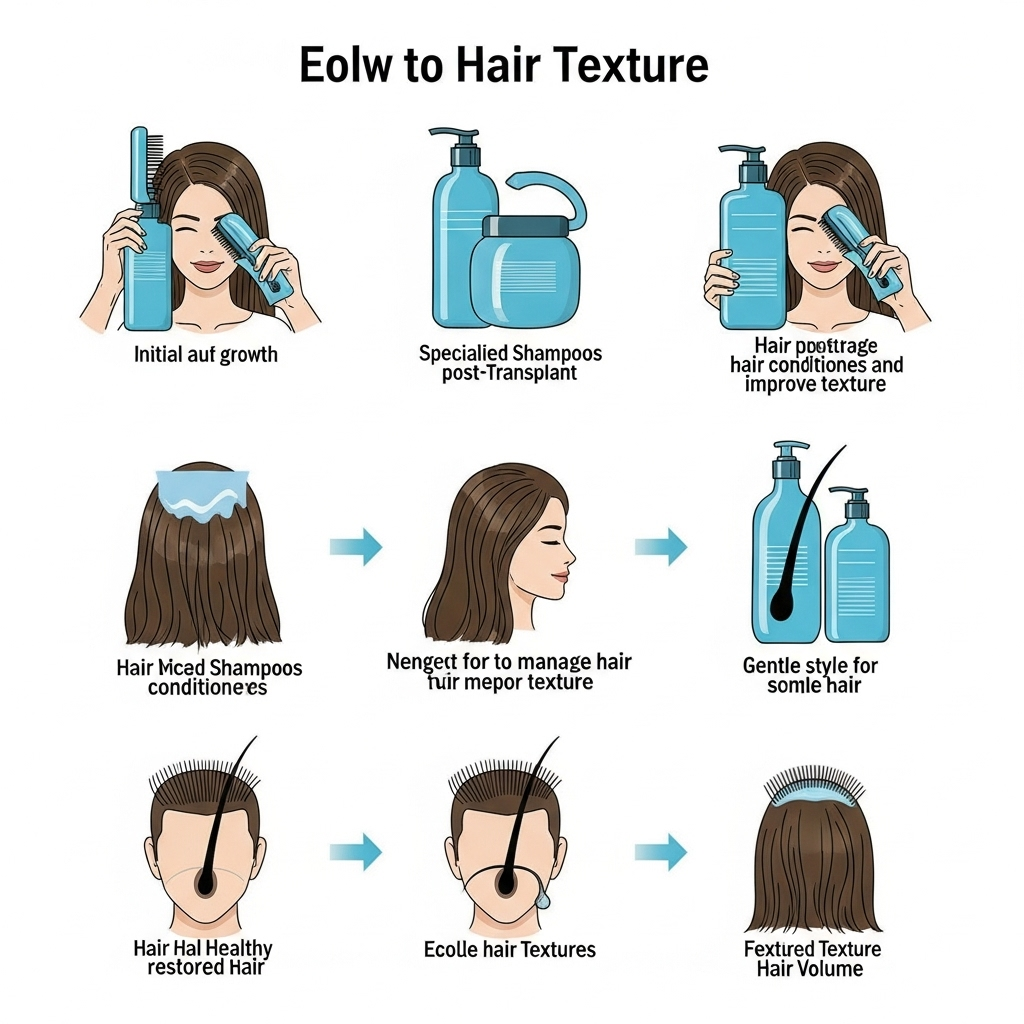Hair restoration is often seen as the ultimate solution to reversing hair loss, but many people are unaware that improving the texture of the newly restored hair is just as important as achieving a fuller hairline. After undergoing a hair restoration procedure, many patients may notice some changes in the texture of their hair as it grows back. Fortunately, there are several steps you can take to improve the quality, texture, and overall health of your hair post-restoration.
In this blog, we’ll discuss proven tips and strategies to improve hair texture after your hair restoration procedure, so you can enjoy beautiful, healthy, and strong hair once again.
Understanding Hair Restoration and Texture Changes
Hair restoration techniques, such as follicular unit extraction (FUE) or follicular unit transplantation (FUT), involve transplanting hair follicles to areas of the scalp affected by thinning or baldness. While these procedures have high success rates in restoring hair density, the texture of newly transplanted hair can initially differ from the rest of your natural hair.
The texture of hair after restoration varies depending on several factors, including the quality of the donor hair, the method of restoration, and how well your scalp heals after the procedure. For instance, newly restored hair can appear finer or drier at first, but with time and the right care, it can match the texture of your original hair.
Here are some effective methods for improving the texture of your hair after restoration:
1. Focus on Scalp Health
A healthy scalp is the foundation of healthy hair. After hair restoration, it’s crucial to maintain a clean and nourished scalp to support optimal hair growth and texture.
Exfoliate and Cleanse Regularly
Use a gentle exfoliating shampoo to remove dead skin cells and product buildup from your scalp. This promotes better circulation to the hair follicles and helps them receive nutrients more effectively. You can also use a scalp scrub once a week to keep the pores unclogged and healthy.
Hydrate the Scalp
Moisturizing your scalp is vital for hair texture improvement. Look for hair care products that contain natural oils like argan oil, coconut oil, or jojoba oil. These oils help to hydrate both the scalp and hair, leaving it looking shinier and healthier.
2. Choose the Right Hair Care Products
Not all hair care products are created equal. After your hair restoration, it’s important to use products that are formulated for your hair type, as well as gentle enough for your newly restored follicles.
Use Sulfate-Free Shampoos
Sulfates are harsh detergents found in many shampoos that can strip natural oils from your hair, leading to dryness and frizz. Opt for sulfate-free shampoos that clean your hair without compromising its natural moisture.
Conditioner for Nourishment
Invest in a high-quality conditioner to keep your hair hydrated and smooth. A moisturizing conditioner will improve hair texture and help manage any frizz or dryness that might occur as your hair grows back. Look for products with ingredients like keratin, biotin, or panthenol that provide additional nourishment.
3. Get Regular Trims
Although it may seem counterintuitive, trimming your hair regularly is one of the best ways to improve texture after hair restoration. Cutting split ends helps to prevent further breakage and keeps your hair looking healthier and shinier.
As your hair grows back, aim to trim the ends every 6–8 weeks. Regular trims will also help your hair maintain a fuller, more voluminous appearance, which is especially important after a hair restoration procedure.
4. Protect Your Hair from Damage
Your hair restoration is a significant investment, and it’s essential to protect your new hair growth from damage caused by environmental factors, styling tools, or hair care habits.
Limit Heat Styling
Heat styling tools like flat irons, curling irons, and blow dryers can be damaging to hair, especially during the early stages of restoration. If you must use them, make sure to apply a heat protectant spray to shield your hair from excessive heat.
Avoid Tight Hairstyles
Tight ponytails or braids can cause hair breakage, especially when the hair is still growing back after a restoration procedure. Instead, opt for looser hairstyles that don’t put too much stress on the hair follicles.
Protect from UV Rays
Just like your skin, your hair can suffer from the harmful effects of UV rays. Protect your hair from the sun by wearing a hat or using hair products that contain UV protection. This will help prevent further damage to the hair shaft and keep your hair looking vibrant.
5. Maintain a Healthy Diet
What you eat plays a crucial role in the health and texture of your hair. A balanced, nutrient-rich diet supports optimal hair growth and helps to improve the texture of your restored hair.
Focus on Protein-Rich Foods
Hair is primarily made of keratin, a protein, so it’s essential to include protein-rich foods in your diet to support the growth and strength of your hair. Include sources like lean meats, fish, eggs, and legumes in your meals.
Consume Vitamins and Minerals
Key vitamins and minerals such as biotin, vitamin D, vitamin E, zinc, and iron are essential for maintaining healthy hair. These nutrients help promote better hair texture and strength. Consider taking supplements or incorporating more nutrient-rich foods like leafy greens, nuts, seeds, and fruits into your diet.
6. Be Patient with Your Hair Growth Journey
Improving hair texture after restoration takes time. While you may start seeing the first signs of new hair growth within a few months, full recovery and optimal texture can take up to a year or more, depending on the individual.
During this period, it’s important to manage your expectations and be patient with the process. With proper care and attention, your newly restored hair will eventually match the quality and texture of your original hair.
Conclusion: Take the First Step Toward Hair Confidence
Improving the texture of your hair after restoration is a gradual process that requires consistency and care. By focusing on scalp health, using the right products, trimming regularly, protecting your hair from damage, maintaining a healthy diet, and being patient, you can enhance the texture and quality of your hair.
At ZMD Hair, we understand that the journey to hair restoration is about more than just physical appearance—it’s about restoring confidence, vitality, and the way you feel about yourself. If you’re ready to take the next step and achieve your hair goals, we’re here to guide you every step of the way.
Book your consultation with ZMD Hair today and let us help you improve not just your hair’s texture, but your confidence and self-image.
Don’t wait any longer—start your journey to beautiful, healthy hair today!




